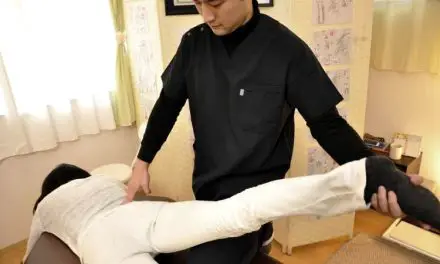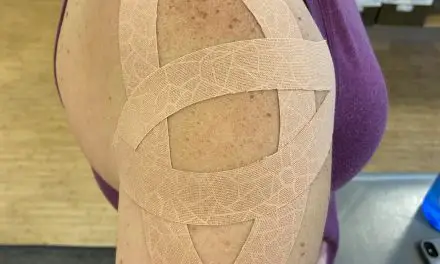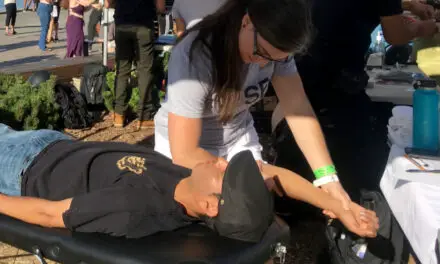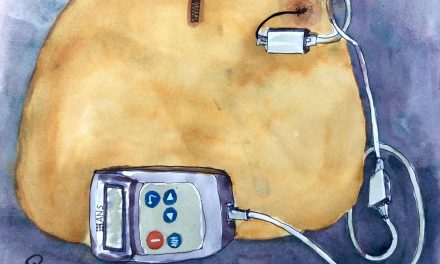Health insurance in Australia has had many twists, turns, and a few bumps along the road, especially over the last 25 years. Although I can’t remember its importance, it dominated my thoughts prior to graduating in 1993 with a remedial massage diploma. The health insurance industry has become instrumental in regards to remedial massage becoming popular and recognised as a health adjunct in our busy lives.
Back in the early 1990s, massage therapy initially didn’t get a good rap because it was often associated with adult services. It was seen as no more than a ‘rub down.’ Massage therapy was a modality of extremes, of psychic touch, energy healing, chakra balancing, incense burning, and Enya singing “Shepherd Moons.” It was all a bit ethereal in the early 1990s.
Massage myths were widespread, such as the presence of toxins in the muscles, the importance of drinking water after a massage, and the dangers of massaging pregnant people. Oh, and a massage therapist should never talk in a therapy session in the quiet, darkened room saturated with aromatherapy—which is, ironically, what most of the public expect in a spa today.
As with progress, we sometimes need to redefine ourselves to find clarification. Remedial massage therapy in Australia today is recognised by the health insurance and is affiliated with allied healthcare. Today we practice evidence-based therapies; we listen, question, learn how to understand and interpret pain in connection with how we treat our clients. Every client has a detailed history file, a treatment plan, and we explain the therapy and more often than not the expected outcome. Remedial massage therapists (RMTs) have evolved, and we have earned the credibility as health professionals who work in an exciting burgeoning health industry.
In the last few years in Australia, many “natural therapies” have been under the spotlight as to whether there is enough evidence to support these therapies to contribute the effectiveness and efficacy of the treatments proposed. “Natural therapies,” as defined by the Australian government, is “a natural therapy is one which is being offered by a private health insurer, and is defined as a treatment that meets the definition of general treatment under section 121-10 of the Private Health Insurance Act 2007 (the Act).” In other words, the umbrella term covers treatments not in conventional medicine, like at a hospital, for insurance purposes.
Are they beneficial? Do these treatments actually work? The National Health and Medical Research Council of Australia argued certain modalities in natural therapies appear to cost taxpayers money, increasing the cost of health insurance premiums. It has been estimated these escalating costs have increased significantly in Australia over recent years. The escalating increase in health premiums is turning people away from medical insurance. Therefore, a new look at how Australians buy health insurance came under scrutiny.
The conclusion of the review from those who participated created a difference in the health insurance industry. Some major and significant changes resulted as follows:
“The findings were the former Commonwealth Medical Officer found that there was no clear evidence demonstrating the efficiency of the excluded natural therapies, and therefore would be excluded from the definition of private health insurance general treatment and will no longer receive the private health insurance rebate as part of a general policy.
“The therapies not meeting sufficient evidence to prove beneficial are as follows:
“Alexander Technique, Aromatherapy, Bowen Technique, Buteyko, Feldenkrais, Western Herbalism, Homeopathy, Iridology, Kinesiology, Naturopathy, Pilates, Reflexology, Rolfing, Shiatsu, Tai Chi, and Yoga.
“Remedial massage therapy remained on the list as being as recommended beneficial to health.”
In 1994, before remedial massage was rebated, an innovative general manager of Grand United Health Fund attended a street fair, standing amongst the crowd, watching the students from Nature Care College (Sydney, Australia) give free 10-minute massages to fair-goers. They had the longest queue of all the booths and a slick performance with public relations went hand-in-hand. He obviously was inspired, or perhaps he had the green light to research the phenomena that therapeutic massage had on people. Whatever it was, he had a light bulb moment. This eventually shaped the future of remedial massage therapy in Australia.
By 1995, the first qualified RMTs applied for provider recognition with Grand United Health Fund. Initially, it was a slow process to inform clients that if they signed up to Grand United. They would receive a rebate for massage therapy, depending on their cover. We therapists spread the word. It was in both of our interests to push the product. Eventually, other health funds joined the procession of rebates for remedial massage.
The criteria for provider recognition in remedial massage therapy rebate
To obtain a remedial massage provider number, RMTs follow a few basic rules. The criteria is to state your modality practice and professional qualifications. Only therapists holding a diploma in remedial massage were accepted. It was a requirement to have current first aid certificate, registration with a recognised professional association, personal indemnity, public liability insurance, and an Australian business number (ABN).
By 2000, the Australian Government announced a 30 percent rebate on health insurance premiums if people signed up within the tax year. This incentive saw a massive escalation in the number of people joining health funds. By 2002 to 2003, the volume of massage therapists could not meet the demand of clients. It became acceptable for someone who had gained a certificate in remedial massage to obtain a health fund provider number.
Unfortunately, this action was disastrous for the massage industry—it lowered the standards of remedial massage. Registered training organisations were popping up all over the place. The sheer volume saw the accreditation process lose its uniformity. Remedial massage therapists who had previously obtained diplomas were now aligned alongside therapists who had six months of part-time training. The disparity was causing concern with those therapists who took their professional vocation seriously, having obtained many academic hours to become a RMT.
The influx of new institutions offering short-term courses to qualify as a RMT resulted in some training institutions performing under the radar of proper accreditation. The general public was totally confused; they were being offered remedial massage and found massive discrepancies between the quality the therapists were offering and the fees they were paying. Therapists who held bodywork diplomas were charging more and were up in arms that “Cert IV” therapists who had done a mere three to six month part-time course were being seen equivalent to their two-year course—not to mention many of these massage therapists in the early 1990s often achieved two or three bodywork diplomas.
By 2009, it was decided by the health funds that they would no longer allow a certificate IV in massage to rebate remedial massage. However, those who had previously obtained a provider number could continue. It was found that some therapists holding a cert IV were massage parlours exploiting the system where one therapist in the establishment held a cert IV and was rebating their clients for “happy endings.”
The murky waters needed clarification. The natural therapy associations sought to agree on standardising the training for remedial massage qualifications. Eventually, uniformity reigned in the training packages.
“In 2013 The Australian Quality and Framework for qualifications was revised. The primary audience for the publication are organisations that develop qualifications and those that are authorised through government legislation in Australia to accredit an/or issue AQF qualifications and must use the AQF for these purposes.”
Remedial massage therapy Australia in 2019
The criteria for remedial massage to obtain health fund provider status is now as follows:
1. Must have completed a diploma for remedial massage at an Australian registered training organisation. E.G. HLT 52015 HLT 50307 HLT 50302.
2. Applicants must meet the compulsory additional professional association and recognition requirements.
3. Remedial massage therapist compliance to obtain a health fund provider number.
4. Minimum of $2 million professional indemnity insurance.
5. Current senior/workplace first aid.
6. Continuing education points, minimum 20 points (1 point = 1 hour).
A provider must:
1. Be a full financial member of an association.
2. Registered to be in private practice, with a legitimate clinic address.
Today, the TAFE (technical and further education) qualification for a diploma in Remedial massage is 18 months to two years full-time
Fee: Diploma Remedial Massage AUS $4,907.00.
Today, it is great to look back and see how far the massage industry in Australia has traveled. The general public are aware through advertising and the health funds how to distinguish between a RMT and a “hobbyist” massage therapist. Health funds have registered sites where bona-fide RMTs have a profile which is often linked to their website. The public have the ability to review therapists they have visited, which is closely monitored by the health funds.
We have finally earned a place as credible health professionals in the ancillary healthcare field. There have been so many pioneers out there who have worked hard, chipped laboriously away at the edges, faced adversity and who were not always popular with speaking out. No room for complacency, a wealth of learning is on the horizon and the future ahead is exciting. We can and do make a difference to peoples’ health. It is great to have validation of our work and receive recognition we are health professionals.
I often wonder where that general manager of Grand United is today. Does he know how fundamental he was in making remedial massage come into its own? All it takes is for one seed of thought to grow momentum, and then the whole world sprouts a new wave of thought. Inspirational.
Update for Covid-19: The COVID 19 pandemic in some states in Australia allowed a remedial massage therapist at diploma level to be classified as an essential health worker. A remedial massage therapist with health insurance provider numbers was given permission to work in lockdown. However many chose not to pursue work as it contravened social distancing laws. Too little was known about the virus to feel responsible for safe practice in the clinical environment.
Association of Massage Therapists Covid19 resources
Workplace Health and Safety in a Covid-19 World
References
Australian Massage Therapy Code of Practice
Further Reading
1. Duff E. Medibank clamping down on remedial massage parlours offering rebates for sex services. The Sydney Morning Herald. 2013 November 23.






